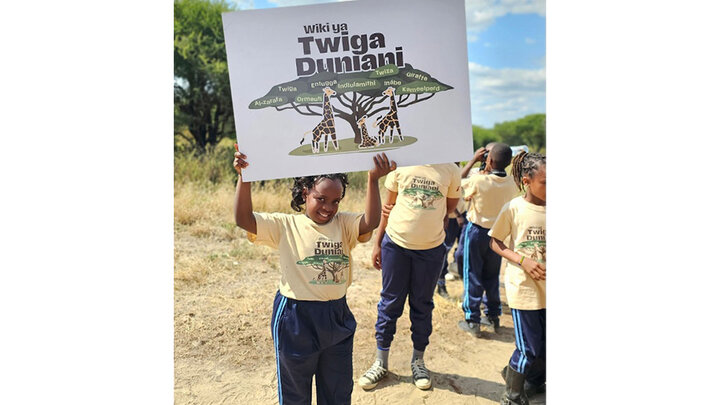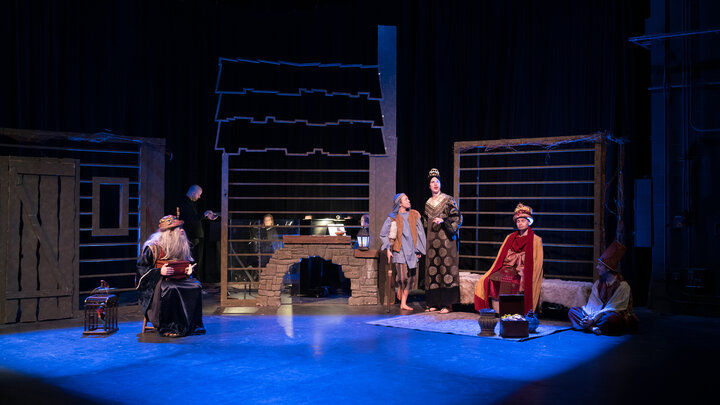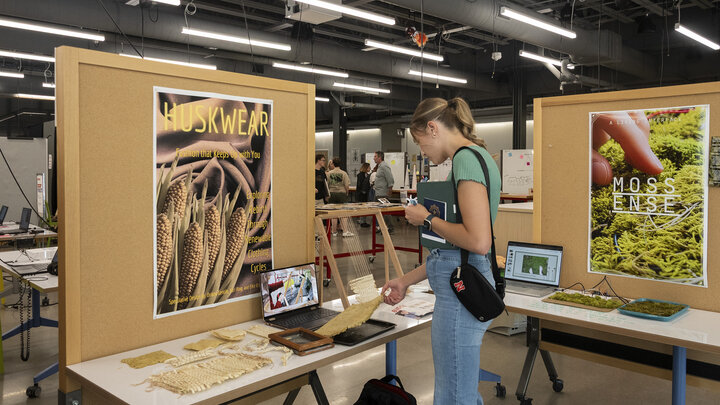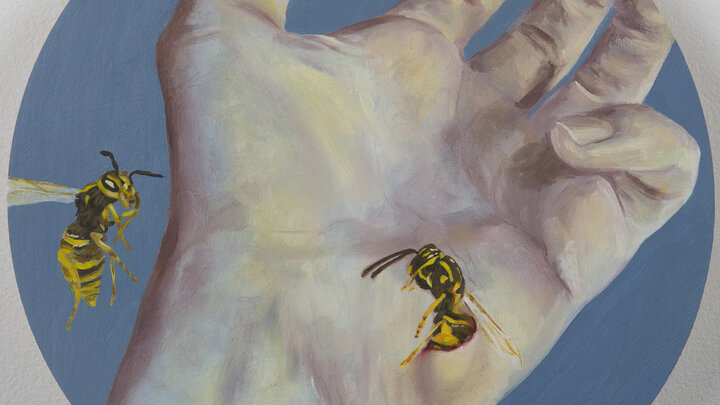Lincoln, Neb.—Three graphic design students in the School of Art, Art History & Design designed graphics for World Giraffe Week, June 16-22, for Mongabay Kids.
Coordinated by Associate Professor of Graphic Design Stacy Asher, the work of graphic design students Abigail Bubak, Lindsey Johnson and Johna Moural is published on the website https://www.worldgiraffeweek.org.
World Giraffe Week (WGW) is a celebration of giraffes and the nature around them. During the week, the team at Mongabay Kids put together different activities, fun facts, reading sources and poems and much more to teach people about why giraffes are so crucial.
“For our job in this, the WGW Design Team was to create all the graphics for the research that Mongabay Kids and all their partners (Wild Nature Institute, Save the Giraffes, Somali Giraffe Project, Anne Innis Dagg Foundation and Junior Giraffe Club) did for WGW Week,” Moural said. “This year our deliverables were to create an overall logo for the event, a t-shirt graphic, social media posts for the entire week, a postcard, a flyer for an art exhibition that anyone could submit to, a comic teaching us about the relationships between giraffes and trees, and a poem written by Jason Patoolool. We also had the freedom to experiment with typography and colors, which was exciting for the whole Design Team.”
Megan Strauss, a managing editor for Mongabay Kids, said the students’ work was strong.
“The team developed a strong visual identity that worked beautifully across platforms—from the Mongabay Kids and World Giraffe Week websites to social media,” she said. “A standout design piece for me is the comic about why both giraffes and people need trees in Tanzania, and what kids can do to help protect this shared habitat. It’s based on a real conservation project by Wild Nature Institute. The comic design is vibrant and engaging and, most importantly, I think kids will really connect with it. Another favorite is a gif that spells ‘giraffe’ in multiple languages—a fun piece that tied in nicely with our global audience and social media outreach.”
Moural’s favorite piece of this year’s project was the t-shirts they designed.
“It was the first piece we designed, and it has a little bit of all our design styles in it,” she said. “But the biggest aspect that makes me love this piece is seeing all of the people that are wearing them across the world. As WGW was going on, one of the members of the WGW team would send us some pictures of the kids in Africa wearing the shirts, and it is such an amazing feeling to see them so happy and proud in the shirts we designed. One of the goals of the campaign is for people to hold pride in their support, knowledge and care of giraffes, and these photos are just proof that we were a part of that.”
Mongabay Kids Contributing Editor David Brown said the graphics the UNL team created have been well received by the World Giraffe Week team.
“They are colorful, vibrant and draw people into celebrating giraffes,” he said. “The giraffe graphics that they created have helped people of all ages get excited about giraffes and giraffe conservation. Especially noteworthy is the collaboration with educators in giraffe range states in Africa where the kids (and their adults) who live around giraffes are their primary conservationists. The design team has worked with educators in Tanzania and Kenya to create comics and infographics for giraffe conservation that are used to celebrate giraffes in Africa and around the world.”
Strauss said they have received positive feedback on their work from their conservation partners.
“Mongabay Kids experienced an uptick in visitors to giraffe-related content over World Giraffe Week, and we expect our audience to enjoy this evergreen content well into the future,” she said. “The visuals enhanced the storytelling and helped make complex topics accessible and engaging for young readers. Collaborations like this help us support emerging creatives while also bringing fresh ideas and energy into our projects. Student designers offer a contemporary aesthetic and a youth-centered voice that enhances our ability to reach and engage young audiences.”
Moural said this was a great opportunity for the graphic design students.
“World Giraffe Week is just such an amazing opportunity to show our designs to people around the world and also help make a difference for a whole species—that’s pretty amazing,” she said. “The design team is also such a talented group of women and some of my closest friends, so that was a personal plus.”
Moural hopes people continue to visit the website and learn more.
“For the WGW design team, I hope that people appreciate the campaign that we created visually,” she said. “It takes a lot longer to make something accurate to science along with being visually different and appealing than it seems.”
Mongabay Kids, a division of Mongabay, is an online environmental education platform committed to connecting children worldwide with nature and empowering them to become stewards of our planet. It informs and inspires children ages 8-14 (and their adults) with conservation news stories, interactive activities, videos and other features.
Asher has worked with Mongabay for four years, connecting graphic design students to real-world projects.
“Mongabay Kids has been a really great organization for me to bring into the classroom with so many fun things to design around,” she said. “A couple of years ago we designed some graphics on endangered species in Nebraska, such as the Topeka Shiner fish. We did prototypes for Wild Times, which is a concept for a newspaper that is designed by youth for youth on conservation news. David Brown and Megan Strauss asked me if I would be interested in helping them with the World Giraffe conservation efforts.”
Brown was introduced to Asher through UNL Professor Emeritus Judy Diamond, who was an advisor to Mongabay Kids.
“We did a project with Stacy’s design class exploring how we might make plants exciting to kids,” Brown said. “They designed some interesting animation and game ideas. We got along really well with Stacy and asked her to become our Mongabay Kids design advisor. We are really happy that she is part of the Mongabay Kids team.”
Strauss welcomes further collaborations.
“This team consistently delivered high-quality, creative and professional work. We’d welcome the opportunity to collaborate again,” she said. “We’ve [also] learned a lot from Stacy—from design terminology and software insights to what students know (or are curious about) when it comes to environmental topics. Her leadership makes these collaborations incredibly productive and rewarding.”
Bubak, Johnson and Moural had paid internships to design graphics both last year and this year for the campaign.
“I think they had a chance to realize global stories and become more aware of the world. They learned what wildlife is like in other places while understanding the conservation need not just for giraffes, but for the Earth. Protecting the giraffe is a really good thing to be tuned into because it’s symbolic of so much more,” Asher said. “It’s an amazing opportunity for them.”
Something Moural learned about giraffes was how strong they are, emotionally and physically.
“I think people often pass them by and just think them to be gentle, which they are, but they have an impressive amount of strength as well,” Moural said. “I also love learning about how emotionally strong they are. They experience emotions like joy, sadness, pain, and more. I think it’s just something to think about.”
Moural said this internship gave her experience she can’t get in a classroom.
“This experience was very crucial to learning how to act in professional settings in person, through emails and over Zoom,” she said. “Classes are, of course, a place to learn about skill sets, but they can only do so much when it comes to preparing someone how to talk to people in professional environments. This experience was the ideal opportunity to learn a lot and build confidence in new skills.”
Brown said the work the students did for them is important.
“Mongabay Kids exists to help young people celebrate biodiversity and nature conservation, and working with UNL students helps define that mission,” he said. “Young people living now will decide how biodiversity survives in the 21st century and beyond. Having UNL students working with us helps define the mission of Mongabay Kids and connect with our audience. We could not have that experience without the internship and collaboration opportunities that Stacy and her students have brought us.”
He hopes the students are proud of their work.
“I hope that they have created work that they are proud to have in their portfolios and that will help them develop their careers,” Brown said. “I hope that they have some enthusiasm for wildlife conservation that they can continue to infuse in their work.”
Moural was grateful for the experience of working with real-world clients.
“But for me, it is also so exciting just to see that my work is out there,” she said. “I am still very young and so is my career, so just to have a few pieces out there and up for the world to see makes me feel like graphic design is the right path for me and for my team.”



